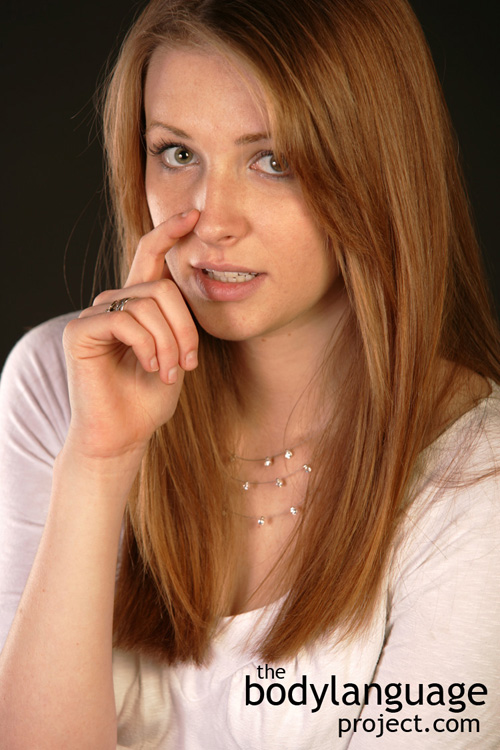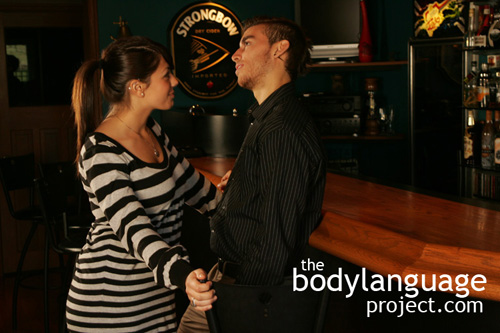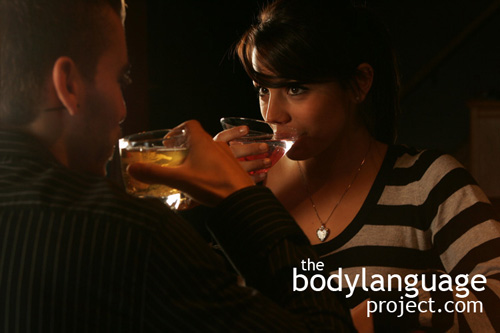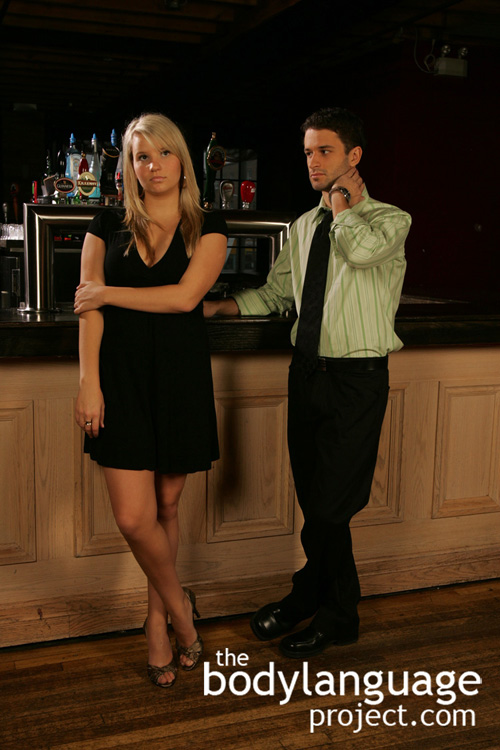He does not answer questions, or gives evasive answers; he speaks nonsense, rubs the
great toe along the ground; and shivers; his face is discolored; he rubs the roots of his
hair with his fingers.
—Description of a liar, 900 B.C.

Touching the nose has long been use as a ‘tell’ when detecting lies. However, is lying just that easy to spot?
I’ve been putting off writing this chapter for some time and not for reasons of laziness. In fact, I have research the topic to death. The problem with lying related body language is that it’s not where it needs to be in order to be useful to the vast majority of people. What research on lie detection, and there is plenty, tells us, is that there is no definitive traits that give up all liars. Most of the cues are either anecdotal or happen some of the time, but not all of the time. Other studies tell us that so called experts, that is, police officers, interrogators, customs inspectors, federal law enforcement, federal polygraphers, robbery investigators, judges, parole officers and psychiatrists fair only at slightly above the fifty percent success rate. In fact, the average is somewhere around thirty-seven to seventy percent. It doesn’t take a mathematician to realize that someone flipping a coin is just as skilled at coming up with the correct answers as any one of the ‘experts’. Other research tells us that higher order interrogators aren’t able to pass on their intuitive abilities to others, telling us that they can’t quantify their observations. If they can’t pass it on to laypersons, than it’s of no practical purpose for me to pass it on either. Other times programs specifically designed and sold to improve detection of deception have failed miserably and have even lead to the detriment, rather than improvement of performance.
Several cues have been attributed to detecting lies. They generally fit into two broad classes. The first is nonverbal visual cues such as facial expressions, eye blinking, eye contact or gaze aversion, head movements, pupil dilation, nodding, smiling, hand movements or gestures, foot and leg movements and postural shifts. The second includes paraverbal cues including pitch, pauses, or speech errors. We will get into these cues in the following pages.
There are other ways that scientists use to detect lies and these involve machines. The most common is the polygraph or lie detector machine. The polygraph relies on changes in heart rate, blood pressure and increases in perspiration or respiration. However, these cues are of practically no use to us because they are difficult, although not impossible to see. For example, an increase in heart rate can be seen if one looks closely at the carotid artery that runs along the neck, and an increase in sweating does become apparent with an increase in scratching of the palms. Further to this, the polygraph has a poor track record and most experts agree that they have severe limitations and their accuracy is known to be inconsistent. As well will see, one facet of lie detection involves the reading of nervousness, but practiced pathological liars are skilled at eliminating nervousness, some even thrive on it thereby reducing the propensity of visible and invisible cues.
Notwithstanding the myriad of hard fast research on lie detection, it is still a widespread belief in the population that nonverbal behaviours betray a liar. Worldwide, cross-cultural comparison has shown a universally held belief that liars are spotted through their bodies. Police training packages will often include nonverbal and paraverbal behaviours as part of the ways in which deception can be detected. A study by Lucy Akehurst of the University of Portsmouth found that when asked which behaviours they thought would be consistent with lying, both police officers and regular lay people agreed. There was no difference between what the experts thought betrayed a liar and what regular people thought. They also agreed that these behavioural changes would occur more frequently in others as they lied, than in themselves. This finding is replicated in other studies as well. For example, police officers and students agreed on which behaviours were consistent with lying and they also thought that they themselves would display these cues less during lying. The research therefore is inconsistent with the nature of lying. It can not happen both ways, and it seems that our attitudes about lying and lie detection are skewed.
Judgments of deception are heavily correlated with long held stereotypes. Person’s that display behaviours associated with lying are often judged as deceptive even though they may be telling the truth. Study after study shows that roughly only fifty percent of the time liars give themselves away, the remaining time, liars are passed off as truth tellers and truth tellers as liars. Pegging liars based on body language alone or some other mystical cue is a dangerous assumption. It can lead to marital break-ups such as if a spouse falsely labels her husband as a cheater, can put innocent people in jail, can lead to the firing of employees on suspicion of theft and so forth. Yet with this huge propensity for error and consequence, we still, by in large, believe that we can read people on this trait. What shouldn’t surprise us are the rewards achievable through lying and cheating. Lying can avoid punishment, save us from hardships, but perhaps more importantly can help protect those around us and their feelings. The question “Does this dress make me look fat?” does not necessitate an honest answer, and in so doing, everyone is much happier!
Teachers, principles, lay persons and even intellectuals have been shown to all think similarly in terms of lie detection, and the body language associated (even if incorrect). Thus to avoid being detected, or mislabeled a liar (which is worse), we should still avoid displaying stereotypical lying body language that will serve to give us away. At this point, you should understand my reasoning for presenting this chapter even if only to slightly help us catch liars. While lying body language may be of some help in catching a liar, it will help avoid making us appear as though we are lying in the eyes of those around us. As the studies on beliefs about deception have indicated, there seems to be worldwide agreement on what constitute cues to deception in others. Therefore, it is these behaviours one should avoid so as not to appear dishonest. I will add too, that lie detection is not impossible, certain individuals do fair better than chance alone when detecting lies. However it is with caution that I present this chapter because as of yet, it is difficult to pin down exactly which cues are used and which cues happen across all people. Some cues mean deception some of the time, while other times they are simply related to emotional arousal and stress which can be due to being portrayed inaccurately as a liar, or in response to the punishment that might be forthcoming. Sometimes it is the worry about being “under the gun” that causes the stress and therefore the behaviour, and not because of any concern about the telling of a lie. While this chapter provides cues to emotionality related to lying, it will be up to the reader of the language to determine the source, be it actual lying or emotions related to being caught.








